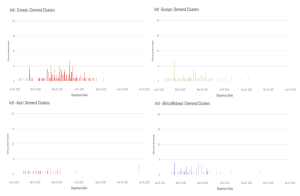How Airline Dynamic Pricing Algorithms Work (And How to Outsmart Them)

You’ve felt it. That sinking feeling when you check a flight price one day, only to see it jump $200 the next. It’s not a conspiracy—well, not exactly. It’s a highly sophisticated, real-time economic dance called dynamic pricing. And honestly, it’s the reason no two people on your flight likely paid the same fare.
Let’s pull back the curtain on the secret world of airline revenue management. We’re talking about complex algorithms that decide, moment by moment, what you should pay for a seat. It’s part economics, part psychology, and a whole lot of data crunching.
The Engine Behind the Fare: What is Airline Dynamic Pricing?
At its core, dynamic pricing is a revenue management strategy. Airlines use complex software to adjust ticket prices in real-time based on a dizzying array of factors. Think of it like a stock market for seats. The price fluctuates based on supply, demand, and what the algorithm predicts someone will pay.
Gone are the days of a fixed price list. This system allows airlines to maximize profit from every single seat. Empty seats are a perishable commodity; once the plane door closes, their value drops to zero. The algorithm’s main job is to prevent that.
The Secret Ingredients: What Factors Do Algorithms Consider?
So, what data points are these algorithms gobbling up? It’s a lot more than just how many seats are left.
1. Basic Supply and Demand
This is the foundation. The algorithm is constantly asking:
- How many seats are available on this flight?
- How quickly are they selling?
- Is this a popular route? (Think New York to Miami vs. Cincinnati to Wichita)
- What’s the historical demand for this route on this specific day and time?
2. The Booking Curve
This is a huge one. Airlines know when you book. They map out typical booking patterns for different types of trips.
- Leisure Travelers: Book months in advance, hunting for deals.
- Business Travelers: Book last minute, are less price-sensitive.
The algorithm uses this knowledge. Prices might be low far out to lure in vacation planners. Then, as departure nears, it anticipates desperate business travelers and jacks up the price.
3. Your Digital Fingerprint (Yes, Really)
Here’s where it gets a bit… personal. There’s ongoing debate about how much they use this, but algorithms can consider:
- Your Location: Your IP address can reveal your city. Prices can be higher in wealthier zip codes.
- Your Device: Studies have shown prices can be different on an iPhone vs. an Android, based on perceived spending power.
- Search History: If you’ve searched for a route multiple times, the algorithm might see heightened demand and nudge the price up. Clear your cookies, folks.
4. The Broader Context
The algorithm isn’t operating in a vacuum. It’s also watching:
- Competitor Prices: It’s constantly scraping data from other airlines. If United drops its price on a route, Delta’s algorithm will notice and likely respond.
- Seasonality and Events: Christmas? Prices soar. A major conference in town? Prices skyrocket. A hurricane? Well, you get the picture.
- Connecting Flights: The system optimizes for the entire network, not just one flight. It might make a leg cheaper to fill a seat and sell a more expensive connecting ticket.
A Peek at the Playbook: Common Airline Pricing Strategies
Within the dynamic pricing model, airlines employ specific tactics.
| Strategy | How It Works | What It Means For You |
| Price Discrimination | Charging different prices to different groups for the same seat. This isn’t illegal; it’s business. They separate price-sensitive leisure travelers from expense-account business flyers. | That’s why Saturday-night stay requirements and advanced purchase discounts exist—to prove you’re a vacationer. |
| Anchoring | Showing you a high “original” price next to a “discounted” fare. The high price is an anchor, making the discount look better than it is. | You feel like you’re getting a deal, even if the “deal” price is what the seat was always worth. |
| Time-Based Pricing | Adjusting prices based on the booking window. The classic “sweet spot” is real—usually 3-7 weeks out for domestic, longer for international. | Booking too early or too late can cost you. Timing is everything. |
Can You Beat the Algorithm? Smart Booking Tips
You can’t completely outrun it, but you can definitely be a smarter runner. Here’s how to work with the system.
- Be Flexible: This is the golden rule. If you can shift your dates by a day or two, or fly from a nearby airport, you open up a world of cheaper options. The algorithm punishes rigidity.
- Book at the Right Time: Aim for that booking sweet spot. Use fare-tracking tools and apps (like Google Flights, Hopper, or Skyscanner) that predict price trends.
- Browse Incognito: It may not always work, but it’s a good habit. Use your browser’s private mode to avoid cookie-based price hikes.
- Consider Alternative Airports: Flying into Newark instead of JFK or Oakland instead of SFO can save a bundle.
- Set Up Price Alerts: Don’t waste time checking manually. Let the technology work for you. Get an email when the price drops.
- Look at Connecting Flights: Sometimes, two separate tickets or a slightly longer route is dramatically cheaper. The algorithm values non-stop convenience highly.
The Future of Flight Pricing
It’s only getting more personalized. With advancements in AI and machine learning, future algorithms could analyze your entire travel history, your social media profile, and even the weather at your destination to predict your maximum willingness to pay. The line between smart business and… well, creepiness… is getting thinner.
That said, the core principle remains. Airlines are selling a perishable product in a fiercely competitive market. Their dynamic pricing algorithms are simply the ultimate expression of that reality. They’re not evil—they’re just exceptionally good at their job. Understanding their logic is your first-class ticket to a better deal.







